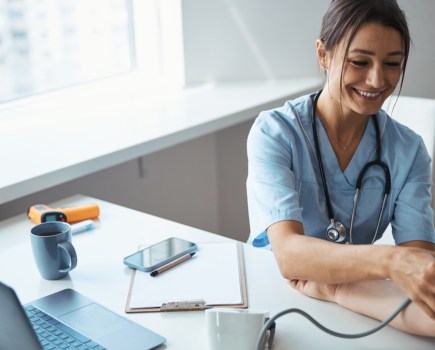Endometriosis affects around one in 10 women of child-bearing age in the UK. It is caused when cells or tissues that are similar to the cells of the womb lining are found outside the womb. It causes a range of symptoms that can include chronic pain, fatigue and fertility problems. Sometimes it can result in depression. Although endometriosis cannot be cured there are a range of treatments that can help.
Read on to find out more about the condition. However, this is no substitute for medical advice, so if you think you may have endometriosis, it is important that you see your GP to get a diagnosis and, if you do have endometriosis, to talk through the possible treatments and find the right solution for you.
What is endometriosis?
Endometriosis is a condition where cells that are similar to those of the womb lining grow elsewhere, outside the womb. This can affect the ovaries and fallopian tubes. These cells respond just as the womb lining does to the menstrual cycle, so they build up and then break down and bleed.
But whereas the blood produced by cells that are actually inside the womb leaves the body when you have your period, blood produced by these other cells elsewhere in the body, has nowhere to go. This can cause inflammation and result in scar tissue being formed. It can lead to a range of symptoms including chronic pain and fatigue and, in some cases, fertility problems.
Endometriosis causes
Currently, the cause of endometriosis is not known. There are a number of theories regarding causes and factors in play may be a genetic condition; or that it could be driven by the lymphatic system; or that it is caused by environmental factors; or that it may be an immune system issue or the result of retrograde menstruation, where some of the womb lining flows backwards into the abdomen.
Endometriosis symptoms
- Pain to varying degrees – pelvic pain, period pain, pain during or after sex.
- Heavy periods.
- Fatigue
- Feeling sick
- Constipation and diarrhoea
Possible complications
Difficulty getting pregnant or even infertility are among the complications that can be caused by endometriosis. Sometimes living with the symptoms of endometriosis can lead to depression. Other issues that can arise include ‘adhesions’ where organs can become joined together by endometriosis tissue.
Endometriosis diagnosis
If you have symptoms of endometriosis, it is important to see your GP. A diagnosis of endometriosis can take time, partly because the symptoms can indicate a number of conditions so this all needs to be checked.
The GP will ask you about your symptoms, so it may help to keep a note of how you’ve been feeling so you can give a full picture. Your GP may also ask to examine you, looking at your vagina and abdomen. You can ask for a chaperone to be present for this examination.
Your GP may suggest treatments at that stage, but they may send you for further tests including an ultrasound scan. Another route to diagnosis is a laparoscopy – a keyhole surgery that allows a surgeon to insert a camera that allows them to see patches of endometriosis.
Endometriosis treatments
Endometriosis has no official medical cure, but there are treatments to help ease the symptoms and make life easier.
Deciding on the right treatment for you is something you would discuss with your gynaecologist, taking into account a range of factors including how the condition affects you, your age and whether you want to get pregnant in the future. You can find out more about the condition from Endometriosis UK.
Surgery
Surgery can be used to treat endometriosis. One of the options is a laparoscopy, which is keyhole surgery that allows the surgeon to remove or destroy the tissue. This is carried out under general anaesthetic. In some circumstances, a hysterectomy may be offered. It is vital to understand the risks and benefits of any surgery, so discuss this in detail with your gynaecologist.
Hormone treatment
Some aspects of endometriosis can be helped with hormone treatment, which aims to limit oestrogen production. The options include the combined oral contraceptive pill, or progestogens such as the intrauterine device called the Mirena Coil. There are other hormone options too, so it is important to understand which are suitable for you, and the pros and cons of each of them before proceeding.
Pain relief
There are a number of ways of reducing the pelvic pain that endometriosis brings. Painkillers such as Ibuprufen and paracetamol can be used and pain modifiers, which change the way the body perceives pain, may also help.
A Transcutaneous Electrical Nerve Stimulator (TENS) machine is sometimes used, but it is important to check with your GP to find out if it is safe for you to use as it is not always suitable. It may also be worth asking your GP to refer you to a pain clinic at your hospital. A warming hot water bottle can also help to make you feel a bit more comfortable.







